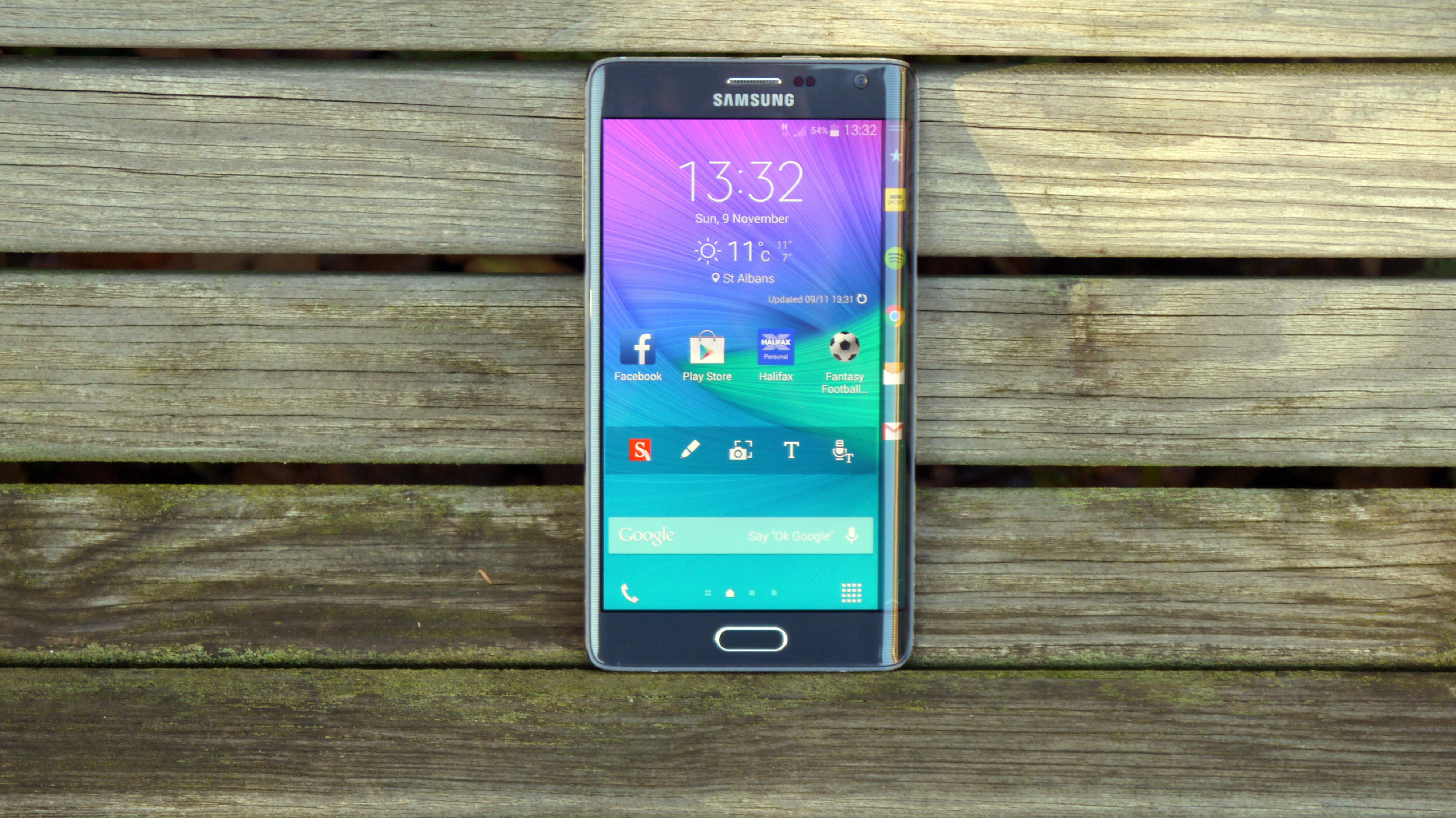Why you can trust TechRadar
Samsung Galaxy Note 4
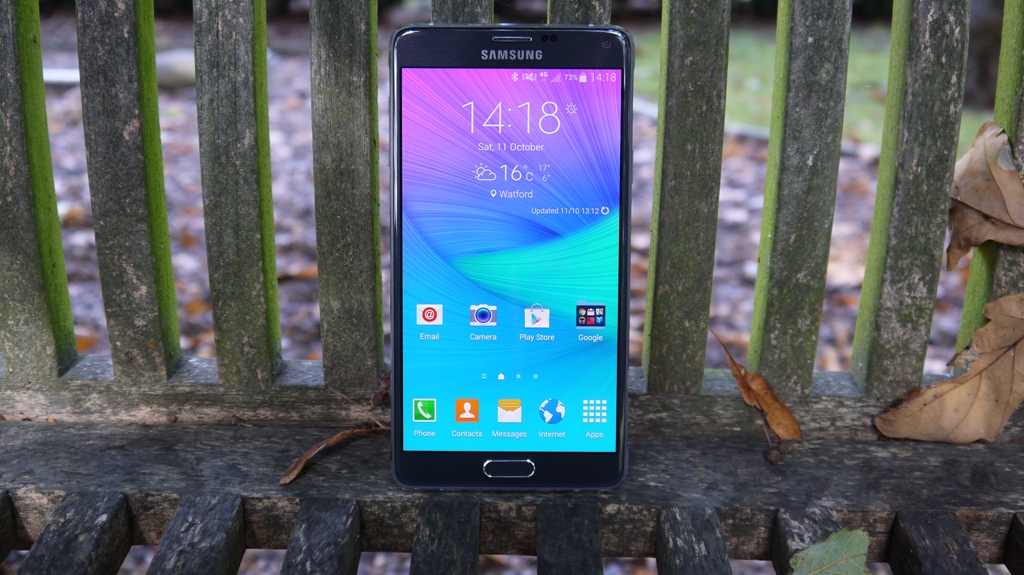
The most obvious rival to the Galaxy Note Edge is from the same stable, with the Samsung Galaxy Note 4 flagship phablet dominating the supersize smartphone war.
With the Note 4 you get a slightly larger 5.7-inch display, minus any curvature, but for the most part the two handsets are pretty identical.
Both boast QHD resolutions, rear facing 16MP cameras and heart rate monitors, 2.7GHz quad-core processors, 3GB of RAM, microSD slots and removable batteries.
The Note 4 has the better battery life thanks to a larger power pack and less demanding software, while the Note Edge has the wow factor thanks to its slender, curved second screen.
You'll find the new S Pen inside both handsets, and it offers the same functionality.
The Note 4 is easier to come by and it's likely to come down in price more than the Note Edge, plus performance on the former is a touch better.
- Read our in depth Samsung Galaxy Note 4 review
LG G Flex
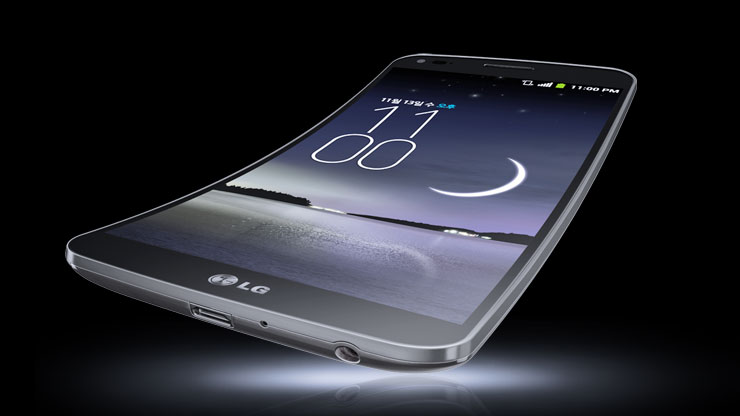
The world's first flexible phone is getting on a bit, and while you can only bend it a few millimetres it's a sign of things to come, and the Galaxy Note Edge is another stepping stone towards the smartphone of the future.
The LG G Flex is massive, a 6-inch display dominates the front of the handset while a massive battery means you'll be able to get two days from a single charge.
That's thanks in part to the 720p resolution which is considerably less sharp than the QHD offering on the Note Edge.
Both handsets are proof of concepts, showing the world that our smartphones can sport curved displays and be just a little bit flexible - as first attempts these are two strong offerings.
They are sure to turn heads in the pub, but if you're looking for high performance from you smartphone there are better, not to mention potentially cheaper, options.
The LG G Flex 2 was recently announced though and could give the Galaxy Note Edge some stiff (or should that be flexible?) competition, so stay tuned for a full review and comparisons.
- Read our in depth LG G Flex review
iPhone 6 Plus
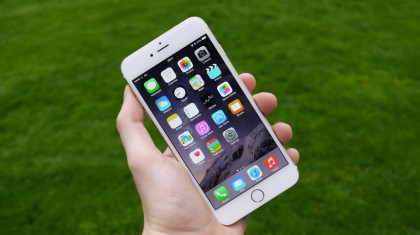
Apple's first phablet has unsurprisingly garnered its fair share of the lime light and the 5.5-inch iPhone 6 Plus offers up a big screen iOS experience.
For those already heavily invested in Apple's ecosystem and fancying a bigger smartphone the Cupertino firm now has something to offer, and unless you really want to give Android a whirl the likelihood is you'll gloss over the Note Edge and jump straight to the Plus.
The iPhone has bigger bezels above and below the screen, part of which is down to the circular home button. That hides Apple's Touch ID fingerprint scanner, and it works better than Samsung's effort on the Edge.
There's no fancy curved second screen on the iPhone 6 Plus mind, and its 8MP camera isn't quite as good as the snapper inside the Galaxy Note Edge - but there's very little in it.
In terms of price both handsets are going to set you back a lot of money - there are large handsets offering better value for money, so if that's a key factor for you then the 6 Plus and Note Edge are unlikely to do it for you.
- Read our in depth iPhone 6 Plus review
Nexus 6
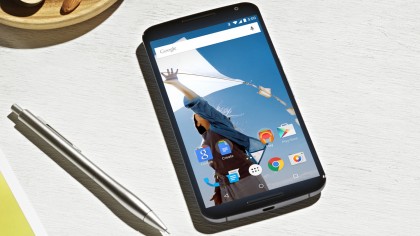
Google's last own-brand handset (courtesy of Motorola) is the flagship for its new mobile platform, Android 5.0 Lollipop.
It's bigger than the Galaxy Note Edge, with a portly 6-inch display, but for Android purists it offers up the operating system the way Google intended.
I fully expect the Note Edge to get an upgrade to Lollipop in the near future, but Samsung will still coat it in its TouchWiz interface so it'll look pretty different to the Nexus 6 interface.
The Nexus 6 is stuck with 32GB or 64GB of internal storage with no microSD option and the 3220mAh battery is sealed into the handset.
If you want a decent camera on your smartphone then the Edge tops the Nexus 6, but it's the same unit as you'll find in the Galaxy S5 and Note 4 - both of which are arguably better devices from Samsung.
- Read our in depth Nexus 6 review

TechRadar's former Global Managing Editor, John has been a technology journalist for more than a decade, and over the years has built up a vast knowledge of the tech industry. He’s interviewed CEOs from some of the world’s biggest tech firms, visited their HQs, and appeared on live TV and radio, including Sky News, BBC News, BBC World News, Al Jazeera, LBC, and BBC Radio 4.
